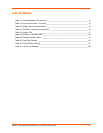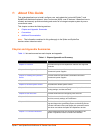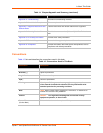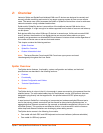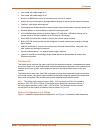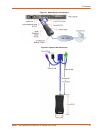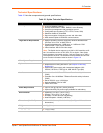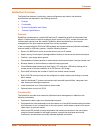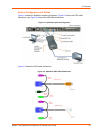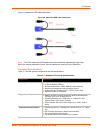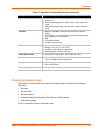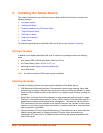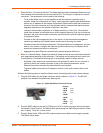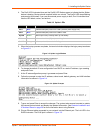
2: Overview
Spider™ and SpiderDuo® KVM-over-IP Device User Guide 20
SpiderDuo Overview
The SpiderDuo features, functionality, system configuration and cables, and technical
specifications are described in the following sections:
Features
Functionality
System Configuration and Cables
Technical Specifications
Features
SpiderDuo provides secure, remote KVM and over-IP capabilities as well as transparent local
access. Coupled with the optional single port power control unit (PCU), remote users can also
initiate system reboots over the network. SpiderDuo allows complete local, plus remote
management of the host machine anytime,from virtually anywhere.
It has one model with both PS/2 and USB keyboard and mouse interfaces (software selectable),
and one model for USB-only systems. It has the following features:
Secure, full BIOS-level control of remote servers over an IP network
Space–saving “zero footprint” package attaches directly to the server that saves rack space
Flexible 1–port design allows growth
Guaranteed non-blocked access to remote servers that ensures lowest “cost-per-remote user”
Browser–based, no client software or special licensing required
Virtual Media support allows local drive (floppy, CD, hard drive, USB stick) sharing with a
remote server or remote installation of an OS from an .ISO image
Direct KVM minimizes the number of clicks to the remote–server console
Built-in RS-232 serial port that can be configured for serial console pass-through or remote
dial-in access
Ideal for distributed IT system environments such as small branch offices, campuses, test
labs, and server hosting environments
Local access and up to 8 simultaneous remote users
Optional power control unit (PCU)
Functionality
The SpiderDuo provides local access for distributed server management in addition to the
following functionality:
Captures the video output from the attached computer.
Compresses the video and sends it over the network to a Java KVM console window launched
by the browser or to a command line on the user system, which draws a replica of the server
video output on the user monitor.
Uses Java KVM console to accept keystrokes and mouse movements on the user system;
recognize those intended for the target computer; transmit the keystrokes and mouse
movements; and emulate a physically attached keyboard and mouse.



